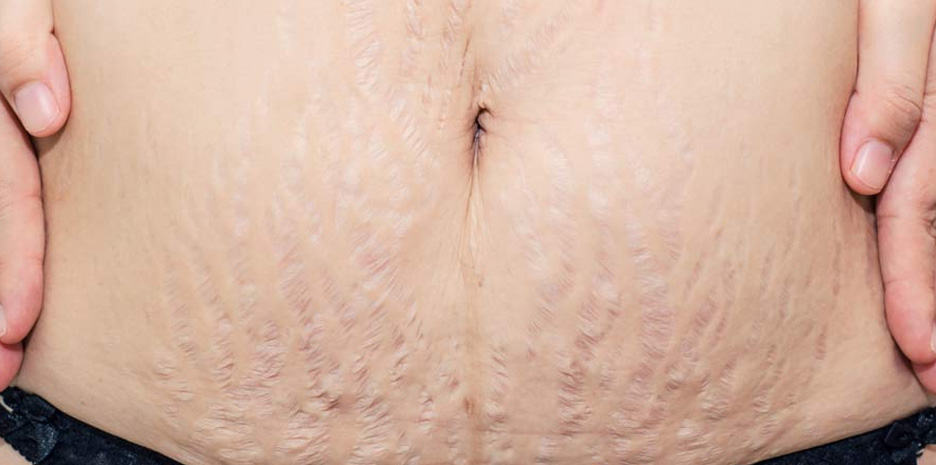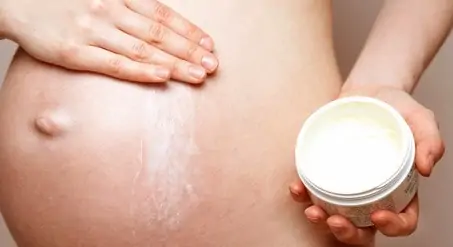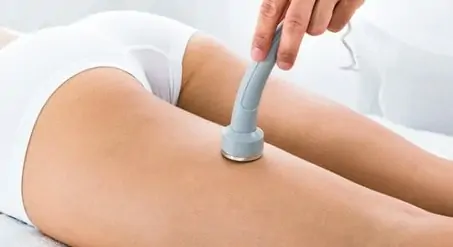
OC 949-428-4500
LA 310-460-2444

Many people who experience stretch marks are self conscious about the appearance of their skin. Skin care providers offer a myriad of creams and treatments for stretch marks to help reduce their appearance.
While stretch marks do not look pretty, they are harmless and do fade over time. They do not require medical treatment if they are not bothersome. If they do bother you, treatment will only partially remove the stretch marks and cannot completely get rid of them.
Patients should know that stretch marks do not pose any medical danger, and are considered only a cosmetic issue. Due to their cosmetic nature, insurance will rarely cover the cost of stretch mark removal treatments.
Drug companies and manufacturers of skin care products promote hundreds of products to reduce the appearance of stretch marks. However, few of these products actually make a difference.
Unlike medical treatments offered by doctors, stretch mark creams and lotions have very little effect on the internal structure and appearance of stretch marks. However, subtle results are seen on new stretch marks when applied habitually.

Prescription creams are available and are very effective in reducing the appearance of stretch marks. Look for creams that include Retin-A, derivatives of Vitamin A or retinol. Strong derivatives of Vitamin A generate collagen, allowing the skin to heal stretch mark damage. Routinely massaging these lotions or creams into stretch mark areas of the skin can spur skin cell creation.
Here is a list of suggestions and myths about some of the most popular topical treatments for removing stretch marks.
Peptides are naturally occurring chains of two or more amino acids in the body. Drug stores often promote peptide-based products to improve the appearance of stretch marks. Claims suggest that peptides can help build collagen and restore elasticity when they are massaged into the skin. Another claim is that peptides can lighten and reduce the appearance of red or purple stretch marks. Unfortunately, there is no scientific data to support the peptide product claim as an effective treatment to get rid of stretch marks.
Wheat germ oil is rich in proteins, minerals and vitamins. Because of this, many believe it stimulates tissue regeneration and is good for reducing wrinkles, scars and stretch marks. However, little medical research has been conducted to prove its effectiveness. Some studies suggest it may be beneficial during the first phase of stretch mark creation. Due to its high strength, strong odor and stickiness, it must be diluted with a carrier oil such as sweet almond or olive oil before being applied.
Retinoids such as “Retin A” are proven and marginally effective in removing stretch marks through increased collagen production. However, the substance is not safe for pregnant or nursing mothers, making retinoid products less appealing for many who suffer from stretch marks. Most scientific data on retinoids deals with the pairing of it with other substances. Perhaps the best use of retinoids for getting rid of stretch marks occurs when it is paired with glycolic acid. Glycolic acid boosts collagen and can be dispensed by your physician. Retinoids are often prescribed to strengthen the epidermis where stretch marks occur before a glycolic acid peel at your doctor’s office. The peels have proven to improve the appearance of stretch marks in about four months.
Research has shown that application of this cream can improve the appearance of stretch marks and is just as effective as microdermabrasion. This cream may irritate your skin and should not be used during pregnancy. Tretinoin cream should be used for stretch marks that have recently appeared.
Vitamin mixtures are becoming increasingly popular as a way to get rid of stretch marks. The most popular vitamin therapy is a combination of vitamin C and E formulations in lotions and creams that are rubbed directly into the stretch marks. Experts say the vitamins can also boost collagen creation, stopping stretch marks in their early stages. Doctors recommend taking at least 500 mg of vitamin C per day taken orally to combat the formation of stretch marks.

Non-surgical treatments such as microneedling, chemical peels and microdermabrasion are far more effective in getting rid of stretch marks than lotions and creams.
Collagen Induction Therapy, AKA “microneedling”, is a form of high-density Acupuncture that is administered with dozens of tiny acupuncture needles mounted on a small roller or a pen-like device. When stretch marks are punctured hundreds of times by these tiny acupuncture needles, the skin naturally responds with a repair mechanism that generates the production of new collagen which remodels the stretch marks and repairs the skin. Collagen Induction Therapy can be used as a stand-alone treatment or in combination with laser treatments. The results from microneedling are quite impressive.
Skincare professionals also treat stretch marks with chemical peels. Chemical peels are a common remedy for stretch marks even though they are not very effective. Patients should be aware that the peels may require more than one session to see results and, in rare cases, can cause scarring due to chemical burns. Using a diluted acid, the outer layer of skin is sloughed off, which spurs the deeper layers, where stretch marks occur, to promote new skin cells. The regeneration of skin cells smoothes the appearance of stretch marks, helping to remove them.
This treatment for stretch marks, which is most commonly used to treat cellulite, is also used to reduce the appearance of stretch marks. Gentle suction and rollers boost blood circulation and lymph flow to problem areas that are prone to get stretch marks. The increased circulation causes the skin to heal and promotes elasticity, ultimately decreasing the appearance of stretch marks.
This treatment attempts to gently polish the skin and exfoliates the top layer, producing a younger, more elastic skin layer. Using a stream of crystals under air pressure, the skin is refreshed and “sanded” to reduce the visibility of the stretch marks. Microdermabrasion can work as a remedy for older stretch marks.
Laser stretch mark removal treatments are by far one of the the most effective remedies for stretch marks. Laser treatments are most beneficial during the early, red stages of stretch marks.
Using lasers, doctors trigger the growth of collagen tissue in the dermis or middle layer of skin where stretch marks occur. As stretch marks are caused by damaged collagen, these types of lasers can dramatically help “remodel” the scar. There are numerous types of lasers that can stimulate collagen regeneration and remodeling within stretch marks.
Some laser specialist doctors even know how to combine the use of many lasers to heal stretch marks. Laser treatment for stretch marks is a process that typically requires at least five to six treatments. Because the laser spurs new skin growth, the results of laser treatments may be seen progressing for up to six months later.
Pulsed dye laser therapy removes the redness found in some stretch marks caused by blood vessels that may grow in the scar. This laser therapy is most effective for newly found stretch marks.
The excimer laser focuses on stretch marks that are whiter or more pale than the surrounding skin. They change the color of stretch marks by stimulating melanin production. When effective, the color of the stretch mark changes to the same color of the surrounding skin, thus becoming less visible. This stretch mark remedy is best for older stretch marks.
Because different types of lasers interact with different components of skin, using a combination of lasers on stretch marks produces the best results.
For instance: laser treatments to remove the red from stretch marks, combined with fractionated Co2 lasers to cause the contraction of collagen which will shrink the stretch marks, combined with other lasers that will smooth the surface of stretch marks. A typical combination laser treatment protocol will utilize 3 to 4 different lasers. In many cases, stretch mark removal treatments are integrated with a variety of non-laser modalities.
Q. Can older white colored stretch marks be removed?
A. Yes, treatment for older white stretch marks is effective. However, to be clear, stretch marks are NOT actually removed. Rather, laser treatments stimulate the body’s natural regenerative machinery to generate new tissue and progressively remodel the scar tissue (stretch marks are actually scars). This blends the area with the stretch marks back into the surrounding healthy skin.
Q. I’ve had stretch marks for 8 years caused by weight gain and loss. Would laser treatment be the best way to get rid of my stretch marks? Are the YG or Infini laser good for this?
A. Yes, stretch marks, no matter the age or cause, can be effectively removed with lasers. One would think that newer stretch marks would respond better and faster to laser treatment than older ones. While this is often the case, we are often amazed at how stretch marks of any age respond to our laser protocols.
In regards to which lasers work best for this, the answer to this question is found within the unique physiology of each patient. Each persons physiology is different and will respond differently to different laser technologies. We have over 25 different lasers to account for this variability among infinitely different physiologies. Each laser can target specific tissues while ignoring others in an exquisitely precise way. For all stretch mark removal patients that we see, we customize a protocol combining multiple laser technologies. This elicits the best response for your particular skin and will generate the best results possible.
Q. How many days does the stretch mark treatment take?
A. In general, one visit is all that is needed to have all of your stretch marks treated. Occasionally, some patients have so many stretch marks covering a large area of their body that they need to be treated in sections over a 2-3 day period. Many patients will also decide to treat only the stretch marks that bother them the most and postpone treatment on the others to sometime in the future.
Following each treatment, your body will work day and night to remove the stretch mark and regenerate new skin. This stimulation of your body’s natural ability to rebuild its self from the inside out will last for about 10 to 12 weeks. At this point it is likely that another treatment will be needed to push the process forward. Thinner, smaller and more shallow stretch marks can virtually disappear in as few as 2 to 3 treatments as they will remodel the fastest. 5 to 8 stretch mark removal treatments are typically needed for thicker, deeper and wider stretch marks in order to get rid of them.
Q. Can I do this at home by holding a magnifying glass over my stretch marks while out in the sun?
A. Unfortunately no. Doing this would not only be very painful, it would only end up burning you and making everything worse. Now you would have a burn scar on top of your stretch mark. Visually it would be worse, structurally it would be more complex and healing would be much more difficult.
Q. Once the laser gets rid of the stretch marks can they return?
A. Once the stretch marks have been remodeled (removed) they typically do not come back. However, if the conditions that originally caused the stretch marks in the first place come back, the creation of new stretch marks is possible. We typically do not recommend stretch mark removal to those considering another pregnancy as this can cause new stretch marks to appear.
Doctors Alice Pien, MD and Asher Milgrom, Phd are established pioneers in the fields of Regenerative Medicine and Skincare. Their expertise ranges from advanced laser systems to HCT/P – Stem Cell medicine. Their medical education and advanced certifications span from medical schools of NY State University, the University of Chicago, to Johns Hopkins, Harvard and UCLA. They approach medicine with the clinical expertise of over 85,000 successful treatments over the past 20 years and significant scientific research resulting in proprietary protocols that they customize for each individual patient.
AMA Regenerative Medicine & Skincare | 1570 Brookhollow Dr., Santa Ana, CA 92705 | 6310 San Vicente Blvd STE 285, Los Angeles, CA, 90048 | Privacy Policy